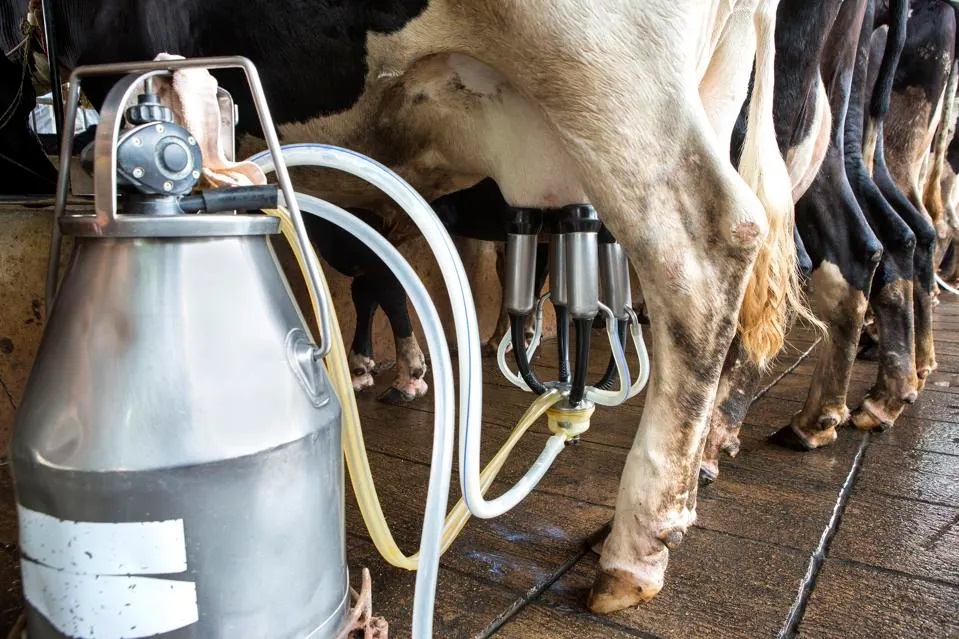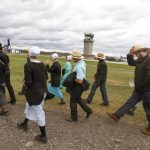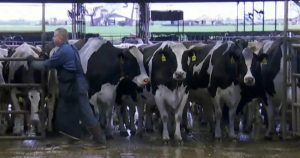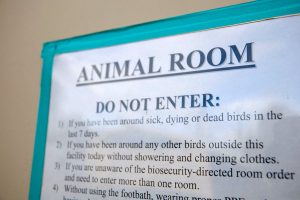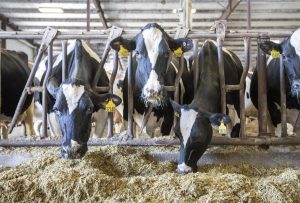
A new CDC report has revealed that 7% of dairy workers tested had evidence of prior infection with the H5N1 avian influenza or “bird flu” virus.
The study conducted between June and August of this year, took blood samples and interviewed 115 people who worked with infected dairy cattle in Colorado or Michigan. All of the workers had roles that included milking cows, cleaning manure and moving cattle. Only a small number of workers questioned reported wearing protective eye equipment such as safety goggles (37%) or high quality masks called respirators (21%).
8 individuals (7%) tested had evidence of antibodies against the virus in their blood, indicating a previous infection within the last three months. 4 people interviewed recalled being ill around the time that the dairy cattle they worked with tested positive for H5N1. All of the workers reported cleaning the milking parlour, with 7 out of 8 people also reporting milking cows. Approximately 4 in 10 people who did not test positive for the virus reported cleaning the milking parlour, with the authors speculating that that activity might be particularly risky for contracting the virus due to high amounts of H5N1 in the milk of infected cows.
None of the people who tested positive for the virus wore the recommended respirator and 3 of 8 wore eye protection. Half of those who had a previous H5N1 infection did not report any symptoms or awareness of being ill when interviewed by the research team.
As of November 4th, the CDC reports only 44 confirmed cases of H5N1 in humans in the U.S. but the new study suggests that the true number of cases might be significantly higher. 440 dairy herds in the U.S. have been infected so far, so if the 7% of workers actually infected in the CDC study from Colorado or Michigan holds true for all dairy farms, the true number of infected workers could be hundreds, or even thousands. Earlier this month, the virus was also detected in wastewater testing in a Los Angeles county, suggesting that a significant number of infections may be going undetected.
According to the World Health Organization, 903 cases of H5N1 in humans have been detected since 2003 across 5 countries. Of these cases, 464 were fatal, resulting in a fatality rare of 51%. However, this is likely to be a significant overestimate as individuals who are more sick are more likely to be hospitalized and be tested for H5N1 and as the new CDC study indicates, some people may be infected but asymptomatic. Many of the symptoms of H5N1 also overlap with other viral infections such as Covid-19 and influenza, meaning people may not know they are infected with H5N1 and those with mild symptoms may not seek healthcare.
At the moment, there is no suggestion that bird flu is being transmitted from humans to humans, although there have been some cases whereby no known exposures to infected animals have been found. However, every person infected gives the virus an opportunity to mutate and acquire genetic adaptations to make this a possibility. Human to human transmission is a real concern, according to experts and could signify an elevation in severity of bird flu to a significant and widespread public health threat.
You can now read the most important #news on #eDairyNews #Whatsapp channels!!!
🇺🇸 eDairy News INGLÊS: https://whatsapp.com/channel/0029VaKsjzGDTkJyIN6hcP1K
